Related Research Articles
The Foresight Institute (Foresight) is a San Francisco-based research non-profit that promotes the development of nanotechnology and other emerging technologies, such as safe AGI, biotech and longevity.

Molecular nanotechnology (MNT) is a technology based on the ability to build structures to complex, atomic specifications by means of mechanosynthesis. This is distinct from nanoscale materials. Based on Richard Feynman's vision of miniature factories using nanomachines to build complex products, this advanced form of nanotechnology would make use of positionally-controlled mechanosynthesis guided by molecular machine systems. MNT would involve combining physical principles demonstrated by biophysics, chemistry, other nanotechnologies, and the molecular machinery of life with the systems engineering principles found in modern macroscale factories.

Nanotechnology, also shortened to nanotech, is the use of matter on an atomic, molecular, and supramolecular scale for industrial purposes. The earliest, widespread description of nanotechnology referred to the particular technological goal of precisely manipulating atoms and molecules for fabrication of macroscale products, also now referred to as molecular nanotechnology. A more generalized description of nanotechnology was subsequently established by the National Nanotechnology Initiative, which defined nanotechnology as the manipulation of matter with at least one dimension sized from 1 to 100 nanometers (nm). This definition reflects the fact that quantum mechanical effects are important at this quantum-realm scale, and so the definition shifted from a particular technological goal to a research category inclusive of all types of research and technologies that deal with the special properties of matter which occur below the given size threshold. It is therefore common to see the plural form "nanotechnologies" as well as "nanoscale technologies" to refer to the broad range of research and applications whose common trait is size.
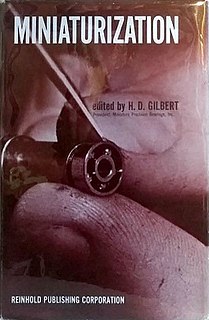
"There's Plenty of Room at the Bottom: An Invitation to Enter a New Field of Physics" was a lecture given by physicist Richard Feynman at the annual American Physical Society meeting at Caltech on December 29, 1959. Feynman considered the possibility of direct manipulation of individual atoms as a more robust form of synthetic chemistry than those used at the time. Although versions of the talk were reprinted in a few popular magazines, it went largely unnoticed. It did not inspire the conceptual beginnings of the field of nanotechnology. Beginning in the 1980s, nanotechnology advocates cited it to establish the scientific credibility of their work.

John Storrs "Josh" Hall is involved in the field of molecular nanotechnology. He founded the sci.nanotech Usenet newsgroup and moderated it for ten years, and served as the founding chief scientist of Nanorex Inc. for two years. He has written several papers on nanotechnology and developed several ideas such as the utility fog, the space pier, a weather control system called The Weather Machine and a novel flying car.

Sir James Fraser Stoddart is a British-American chemist who is Board of Trustees Professor of Chemistry and head of the Stoddart Mechanostereochemistry Group in the Department of Chemistry at Northwestern University in the United States. He works in the area of supramolecular chemistry and nanotechnology. Stoddart has developed highly efficient syntheses of mechanically-interlocked molecular architectures such as molecular Borromean rings, catenanes and rotaxanes utilising molecular recognition and molecular self-assembly processes. He has demonstrated that these topologies can be employed as molecular switches. His group has even applied these structures in the fabrication of nanoelectronic devices and nanoelectromechanical systems (NEMS). His efforts have been recognized by numerous awards including the 2007 King Faisal International Prize in Science. He shared the Nobel Prize in Chemistry together with Ben Feringa and Jean-Pierre Sauvage in 2016 for the design and synthesis of molecular machines.

DNA origami is the nanoscale folding of DNA to create arbitrary two- and three-dimensional shapes at the nanoscale. The specificity of the interactions between complementary base pairs make DNA a useful construction material, through design of its base sequences. DNA is a well-understood material that is suitable for creating scaffolds that hold other molecules in place or to create structures all on its own.
M. Reza Ghadiri is an Iranian-American chemist who studies nanoscale science and technology.
The history of nanotechnology traces the development of the concepts and experimental work falling under the broad category of nanotechnology. Although nanotechnology is a relatively recent development in scientific research, the development of its central concepts happened over a longer period of time. The emergence of nanotechnology in the 1980s was caused by the convergence of experimental advances such as the invention of the scanning tunneling microscope in 1981 and the discovery of fullerenes in 1985, with the elucidation and popularization of a conceptual framework for the goals of nanotechnology beginning with the 1986 publication of the book Engines of Creation. The field was subject to growing public awareness and controversy in the early 2000s, with prominent debates about both its potential implications as well as the feasibility of the applications envisioned by advocates of molecular nanotechnology, and with governments moving to promote and fund research into nanotechnology. The early 2000s also saw the beginnings of commercial applications of nanotechnology, although these were limited to bulk applications of nanomaterials rather than the transformative applications envisioned by the field.
The Feynman Prize in Nanotechnology is an award given by the Foresight Institute for significant advances in nanotechnology. Two prizes are awarded annually, in the categories of experimental and theoretical work. There is also a separate challenge award for making a nanoscale robotic arm and 8-bit adder.
The following outline is provided as an overview of and topical guide to nanotechnology:

Chad Alexander Mirkin is an American chemist. He is the George B. Rathmann professor of chemistry, professor of medicine, professor of materials science and engineering, professor of biomedical engineering, and professor of chemical and biological engineering, and director of the International Institute for Nanotechnology and Center for Nanofabrication and Molecular Self-Assembly at Northwestern University.

Richard Stanley Williams is a research scientist in the field of nanotechnology and a Senior Fellow and the founding director of the Quantum Science Research Laboratory at Hewlett-Packard. He has over 57 patents, with 40 more patents pending. At HP, he led a group that developed a working solid state version of Leon Chua's memristor.
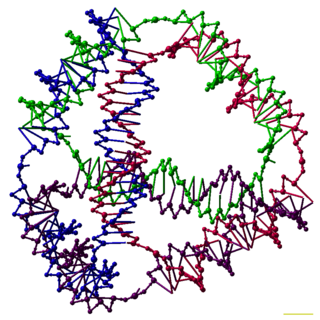
DNA nanotechnology is the design and manufacture of artificial nucleic acid structures for technological uses. In this field, nucleic acids are used as non-biological engineering materials for nanotechnology rather than as the carriers of genetic information in living cells. Researchers in the field have created static structures such as two- and three-dimensional crystal lattices, nanotubes, polyhedra, and arbitrary shapes, and functional devices such as molecular machines and DNA computers. The field is beginning to be used as a tool to solve basic science problems in structural biology and biophysics, including applications in X-ray crystallography and nuclear magnetic resonance spectroscopy of proteins to determine structures. Potential applications in molecular scale electronics and nanomedicine are also being investigated.
Erik Winfree is an American applied computer scientist, bioengineer, and professor at California Institute of Technology. He is a leading researcher into DNA computing and DNA nanotechnology.
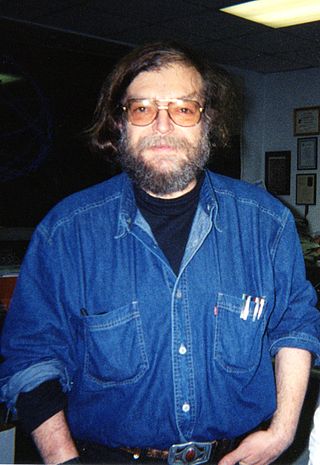
Nadrian C. "Ned" Seeman was an American nanotechnologist and crystallographer known for inventing the field of DNA nanotechnology.
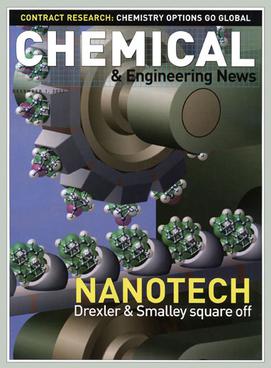
The Drexler–Smalley debate on molecular nanotechnology was a public dispute between K. Eric Drexler, the originator of the conceptual basis of molecular nanotechnology, and Richard Smalley, a recipient of the 1996 Nobel prize in Chemistry for the discovery of the nanomaterial buckminsterfullerene. The dispute was about the feasibility of constructing molecular assemblers, which are molecular machines which could robotically assemble molecular materials and devices by manipulating individual atoms or molecules. The concept of molecular assemblers was central to Drexler's conception of molecular nanotechnology, but Smalley argued that fundamental physical principles would prevent them from ever being possible. The two also traded accusations that the other's conception of nanotechnology was harmful to public perception of the field and threatened continued public support for nanotechnology research.
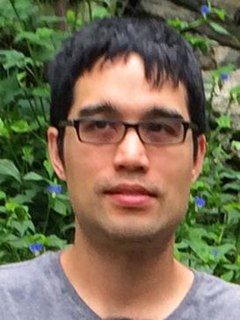
Robert Dirks was an American chemist known for his theoretical and experimental work in DNA nanotechnology. Born in Thailand to a Thai Chinese mother and American father, he moved to Spokane, Washington at a young age. Dirks was the first graduate student in Niles Pierce's research group at the California Institute of Technology, where his dissertation work was on algorithms and computational tools to analyze nucleic acid thermodynamics and predict their structure. He also performed experimental work developing a biochemical chain reaction to self-assemble nucleic acid devices. Dirks later worked at D. E. Shaw Research on algorithms for protein folding that could be used to design new pharmaceuticals.

RNA origami is the nanoscale folding of RNA, enabling the RNA to create particular shapes to organize these molecules. It is a new method that was developed by researchers from Aarhus University and California Institute of Technology. RNA origami is synthesized by enzymes that fold RNA into particular shapes. The folding of the RNA occurs in living cells under natural conditions. RNA origami is represented as a DNA gene, which within cells can be transcribed into RNA by RNA polymerase. Many computer algorithms are present to help with RNA folding, but none can fully predict the folding of RNA of a singular sequence.
TectoRNAs are modular RNA units able to self-assemble into larger nanostructures in a programmable fashion. They are generated by rational design through an approach called RNA architectonics, which make use of RNA structural modules identified in natural RNA molecules to form pre-defined 3D structures spontaneously.
References
- ↑ "Paul W.K. Rothemund official website" . Retrieved 2007-12-28.
- ↑ "2006 Foresight Institute Feynman Prize". Foresight Institute. Retrieved 20 July 2012.
- ↑ "Paul Rothemund". MacArthur Foundation. 18 January 2007. Retrieved 20 July 2012.
- ↑ Pelesko, John A. (2007). Self assembly: the science of things that put themselves together . Boca Raton: Taylor & Francis. p. 259. ISBN 978-1584886877.
- ↑ Eischeid, John (11 April 2008). "When Art and Science Meet, Nanoscale Smiley Faces Abound". Scientific American. Retrieved 20 July 2012.
- ↑ Chang, Chi K. (2016). "Paul Rothemund and S. Ferguson MacDonald, and their Namesake Reactions—The Influence of the Fischer School on my Life in Porphyrin Chemistry". Israel Journal of Chemistry. 56 (2/3): 130–143. doi:10.1002/ijch.201500043.